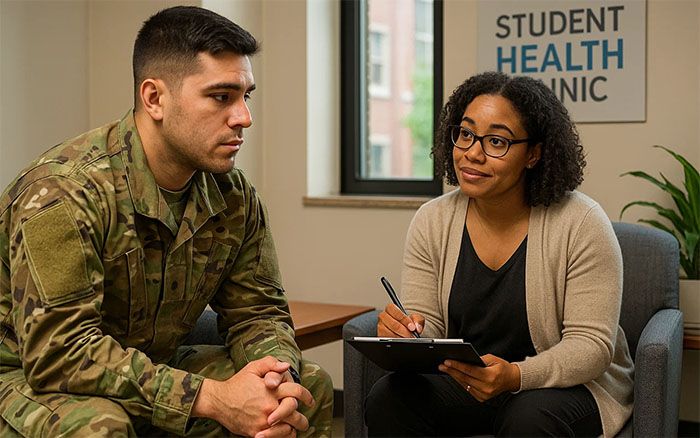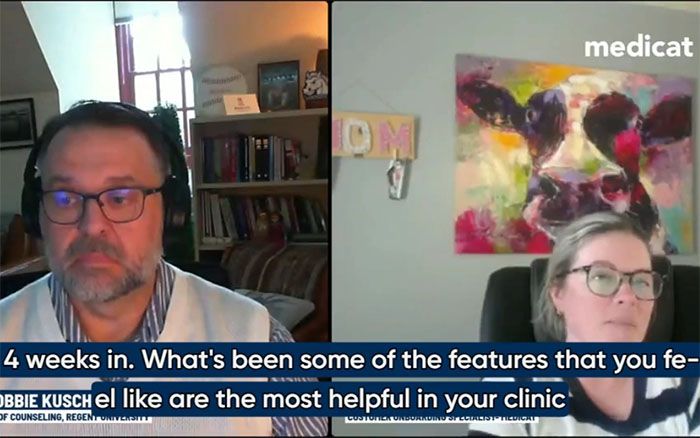The Complete Guide to LGBTQIA+ Student Mental Health
Best Practices for Universities
The journey through higher education brings challenges for all students, but for those who identify as LGBTQIA+, these challenges often intersect with unique mental health struggles that can significantly impact both well-being and academic success.
As a result, colleges and universities are implementing innovative approaches to support LGBTQIA+ students’ mental health needs.
1. Current LGBTQIA+ Mental Health Statistics
The mental health disparities faced by LGBTQIA+ students are alarming and demand urgent attention. According to The Trevor Project, 39% of LGBTQIA+ young people seriously considered attempting suicide in the past year—including 46% of transgender and nonbinary young people.
More statistics highlighting the crisis:
- 12% of LGBTQIA+ young people attempted suicide in the past year, with rates at 14% for transgender and nonbinary youth
- 66% reported experiencing symptoms of anxiety
- 53% reported experiencing symptoms of depression
- LGBTQIA+ youth of color report higher rates of suicide attempts than their white peers, with Native/Indigenous youth at 24% and Black/African American youth at 14%
However, LGBTQIA+ youth in accepting communities attempted suicide at less than half the rate of those in unaccepting communities, underscoring the impact of societal stigmatization on mental health.
Further data highlights the importance of supportive educational environments. More than half (54%) of transgender and nonbinary youth found their school gender-affirming, and those who did reported significantly lower suicide attempt rates. Clearly, creating supportive and accepting environments in educational settings is crucial for reducing mental health disparities and suicide risk among LGBTQIA+ youth.
2. Beyond Representation: Truly Inclusive Mental Health Services
The mental health provider shortage in the U.S. has intensified, with over 122 million people—more than one-third of the population—living in federally designated Mental Health Professional Shortage Areas (HPSAs) as of 2024.
This shortage disproportionately affects LGBTQIA+ students, who are more likely to experience loneliness (70.3%), feel isolated from their peers (33.8%), or feel left out (26.9%) compared to their non-LGBTQIA+ peers. The challenge isn’t just availability. It’s finding providers who understand the unique needs of LGBTQIA+ individuals.
To address these disparities, effective and inclusive mental health services in higher education should include:
- Specialized training programs for campus counselors on LGBTQIA+ affirming care
- Peer support networks facilitated by trained LGBTQIA+ students and allies
- Identity-affirming therapy approaches that recognize intersectionality
Beyond clinical services, campus communities play a crucial role in fostering belonging and well-being for LGBTQIA+ students. Wichita State University’s Spectrum organization creates an affirming space that sustains a visible, active, and inclusive community. Open meetings prioritize honest sharing, mutual respect, and assumption-free discussions, fostering academic success, social connections, and a strong support system for LGBTQIA+ students.
Integrating identity-affirming peer networks alongside formal mental health services helps bridge the gap between professional care and community-driven support. These efforts reinforce a campus culture that prioritizes mental health, well-being, and inclusivity, ensuring LGBTQIA+ students have the resources and connections needed to thrive.
3. Community as Medicine: The Power of Connection
While professional mental health services are essential, the healing power of community remains unmatched. The 2024 LGBTQ+ Student Experience Survey found that only 16% of respondents feel that their community is “very accepting”.
This underscores why a significant number of LGBTQIA+ students choose institutions based on their reputation for inclusivity. Research indicates that LGBTQIA+ individuals are more likely than their non-LGBTQIA+ peers to select colleges in cities or states with more welcoming climates.
Effective community support strategies include:
- Living-learning communities specifically designed for LGBTQIA+ students and allies
- Mentorship programs connecting students with LGBTQIA+ faculty, staff, and alumni
- Identity-specific spaces that acknowledge diversity within the LGBTQIA+ community
- Cross-campus collaborations that integrate LGBTQIA+ perspectives across departments
- Community partnerships extending support beyond campus boundaries
Indiana University Bloomington is a prime example of how these strategies can be implemented. Their LGBTQ+ Culture Center offers a welcoming space, with resources like scholarships, educational programs, and peer mentorship to create a strong sense of community and belonging for LGBTQIA+ students.
Through various services, such as support groups and leadership development opportunities, the center ensures students have the support they need to thrive academically and personally.
4. Technology as an Equalizer: Digital Mental Health Innovations
Digital tools are transforming mental health support for LGBTQIA+ students, especially in regions with limited in-person resources.
These innovations make care more accessible and affirming:
- AI-powered screening tools detect early mental health risks
- Anonymous virtual support groups offer safe spaces for connection
- VR simulations enhance access to identity-affirming care training
- Telehealth platforms that connect students with LGBTQIA+ affirming providers
- Digital psychoeducation resources offer tailored mental health support
However, nearly half of LGBTQIA+ youths still struggle to access the mental health care they need. Barriers such as cost, lack of trained providers, fear of being outed, and parental permission prevent many from seeking help. Although digital mental health (DMH) has the potential to overcome some of these obstacles, most apps currently available do not specifically cater to LGBTQIA+ individuals.
For DMH to be truly effective, it must be inclusive and designed with the needs of LGBTQIA+ youths in mind. User-centered design principles should guide the creation of digital tools that foster a sense of belonging, offer identity-affirming content, and address the unique challenges faced by LGBTQIA+ students. Gathering feedback from users and continually updating content to reflect their needs can support digital platforms becoming a powerful tool for improving mental health outcomes in the LGBTQIA+ community.
5. Moving Forward: Action Steps for Institutions
Creating supportive environments for LGBTQIA+ students necessitates intentional, data-driven approaches.
Based on recent best practices, institutions should consider the following essential steps:
- Conduct Surveys and Climate Assessments: Implement metrics and climate assessments to evaluate and improve mental health support for LGBTQIA+ students, ensuring services remain relevant and responsive to their evolving needs.
- Implement Mandatory Cultural Competency Training: Ensure all mental health providers receive training in cultural competency to effectively support LGBTQIA+ students. This training should encompass understanding unique challenges faced by LGBTQIA+ youths, as highlighted in the CASAT OnDemand guide.
- Create Visible Pathways to Care Addressing LGBTQIA+ Specific Concerns: Develop clear, accessible pathways to mental health services that acknowledge and address the unique concerns of LGBTQIA+ students. The Maryland State Department of Education’s guidelines emphasize the importance of inclusive spaces and services.
- Establish Dedicated Funding Streams for LGBTQIA+ Mental Health Initiatives: Allocate specific funding to support mental health initiatives tailored for LGBTQIA+ students, ensuring sustainable and targeted support. This commitment is crucial for addressing the unique challenges faced by these students.
These steps enable institutions to create environments that promote mental health, well-being, and success for LGBTQIA+ students.
Key Takeaways
The mental health challenges faced by LGBTQIA+ students require innovative and comprehensive solutions from higher education institutions.
Through the integration of professional services, community support, and technological advancements, colleges and universities can foster environments that enable all students to succeed and thrive.
Learn More: Discover how your campus can enhance student well-being with this guide featuring universities revolutionizing the college wellness center experience.



















